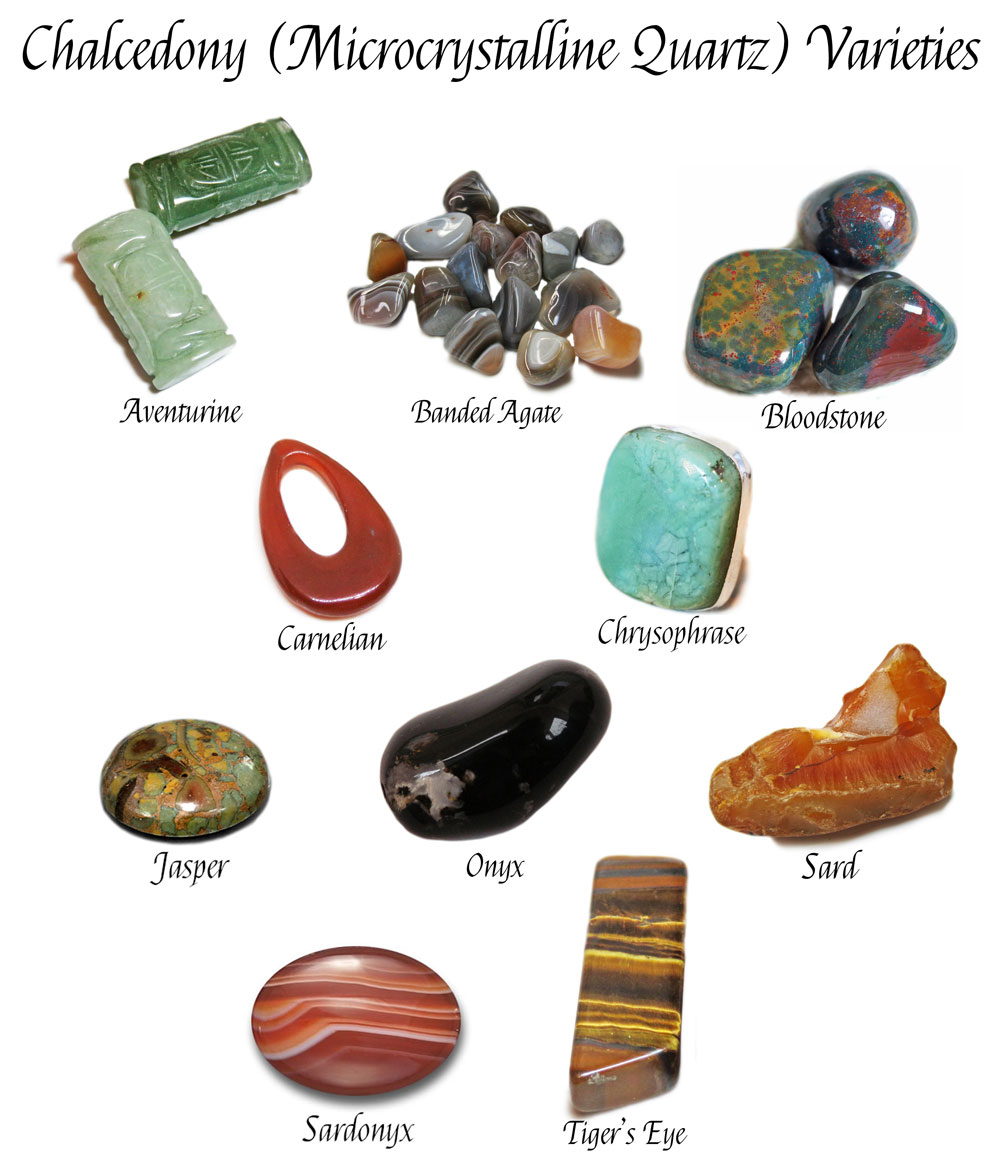
Chalcedony is the microcrystalline form of quartz, which simply means that the crystals comprising this form of quartz are not visible with the naked eye. For example when a variety of macrocrystalline quartz, such as amethyst, is found lining a geode the crystal structure can be seen forming spikes and flattened edges. When a variety of chalcedony is found in a geode it lines the cavity in blobs because the crystalline structure cannot be seen without magnification.
Pseudomorphs, a mineral formed by chemical or structural change of another substance while retaining its original external shape, can be created when chalcedony replaces the structure of another organic substance. The most well-known pseudomorph formed by chalcedony is petrified wood. Petrified wood is most commonly associated with trees that were buried in fine grained sediments of deltas and floodplains or volcanic lahars and ash beds. In this environment mineral-laden water flows through the interiors of cells and empty spaces within organic material replacing its cells with a mineral such as chalcedony. During replacement the cell walls of the organic material act as a template for the mineralization process. That’s how petrified wood can look like wood but actually be stone.
Specs
| Chemical Formula | SiO2 | Composition | Silicon dioxide |
|---|---|---|---|
| Color | Color White, blue, red, green, yellow, orange, brown, pink, purple, gray, black, colorless, and multicolored. Often banded in many different color combinations, and a few rarer forms are iridescent. | ||
| Crystal System | Hexagonal | Hardness | 7 |
| Transparency | Transparent to opaque | Luster | Vitreous, waxy, or dull |
